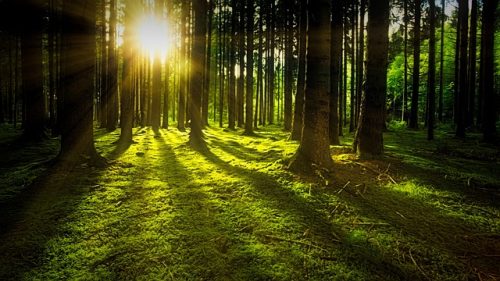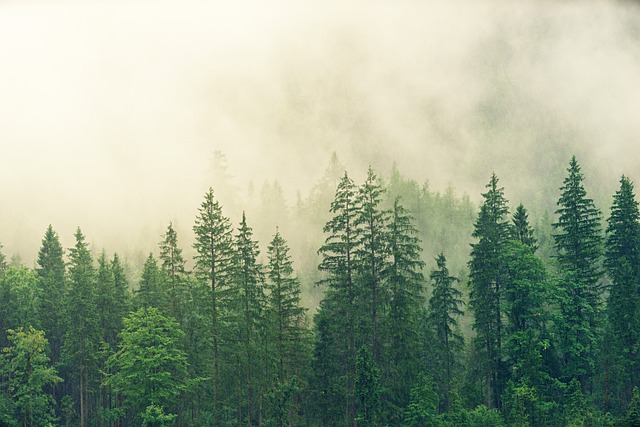Forests of Pakistan:
Forests with their lush vegetation and myriads of trees are cited as the lungs of the Earth. Forests are not only important for local biodiversity but are also responsible for Carbon Sequestration.
Pakistan, however is unfortunately a country not quite richly endowed with forests. With most of the area falling under arid or semi-arid areas, forests make up less than 6% (approx. 5.7%) of the area that support the local economy, provide clean air and other resources that allow people to live. We have man-made forests as a result. Even globally, with the ever increasing population of the planet and carbon emissions, forests are under threat more than ever. Pakistan even more so since we are already seeing a population boom leading to increased urbanization, impacts of climate change and deforestation. See: Deforestation- Causes, Effects and Solutions
Also check out: 15 Amazing Quote Wallpaper Pictures about Trees and Forests

If you wish to get detailed info about each type of forest biome or ecosystem zone or forest type present in Pakistan then check these articles given below out:
- Temperate Deciduous Broadleaf and Mixed Forests of Pakistan
- Coniferous (Taiga or Boreal) Forests of Pakistan
- Mangrove Forests of Pakistan
- Littoral and Swamp Forests of Pakistan
- Tropical Thorn Forests of Pakistan
List of Forests in Pakistan:
According to a survey in 2017, these are the percentages of area in Pakistan that are covered with forests in different regions: 36.9% in Azad Jammu Kashmir, 22.6% in Islamabad, 20.3% in KPK , 14.4% in Punjab, 9.4% in Sindh and 19.5% in FATA. Following is a list of well-known forests:
- Birir Valley Forest: It is a forest located in Chitral District. It is a coniferous forest and is also known as Deodar Chilghoza Oak Forest. It is a natural forest now under protection by the government.
- Jhangar Scrub Forest: It is located in Chakwal District. It is also a natural forest and consists of mainly moss and shrub like vegetation and trees.
- Sulaiman Forest: It is another natural coniferous forest that is located in KPK. It is known by another name- Suleiman Chilghoza Pine Forest.
- Juniper Forest: This is located in the Ziarat district of Baluchistan and is one of the most famous natural forests of Pakistan. It is the largest Juniper forest in Pakistan and second largest in the world. It is also a coniferous forest.
- Changa Manga Forest: This is a man-made or artificial forest in Lahore, Punjab. Once, it used to be the largest man-made forest in the world but due to illegal deforestation it has fallen into a state of exploitation. It is a tropical thorn forest mostly consisting of species that require less water and can grow in arid conditions.
- Rama Meadows Forest: It is located in Gilgit Baltistan.
- Chichawatni Reserved Forest: It is also a planted/ artificial forest in the district of Sahiwal. It was originally a tropical dry forest.
- Khipro Reserve Forest: Located in Sanghar district in Sindh, this forest has been planted to be used as a fuel source, for timber and to be utilized in the pulp industry. It mainly has eucalyptus trees.
- Mukshpuri Top Forest: It is a sub-alpine coniferous forest and is located in Nathia Gali in KPK. It is a hotspot of diversity in terms of flora and fauna as well as a huge tourist attraction spot.
- Mushkin Forest Nursery: This forest is also resource managed and artificial. It is present in Gilgit Baltistan nearby Astore Valley.
You might also wish to read: Sustainable Forest Management – Methods and Importance and Agroforestry – Importance and Application in Pakistan.
In conclusion, every year thousands of forests are destroyed and cleared in order to make way for new residential societies, building complexes or agriculture land necessary to support the large populations migrating to cities. In those areas where the forests do remain they are under pressure from pollution, degradation and constant misuse of their resources. Since most population lives below the line of poverty they indulge in unsustainable forestry practices like illegal logging, clearing of land and a lack of awareness leading to intense pollution that harms the health of the forests. Due to deforestation, there are ever increasing problems for the management of these forests.
As crucial as they are for the general global environment, there is no doubt that they are also important for boosting local economy, tourism and biodiversity of various animals and plants. There have been afforestation drives in the Thal region to increase the forest cover in Pakistan as well. If you would like to read more on afforestation, check out: What is Afforestation? What are its Methods and Importance?
Also read: What is Reforestation? What are the Methods and Importance?
For more information on Deforestation, you may see: Deforestation in Pakistan and Recent Reforestation Drives
We hope you liked this post! Please comment below if you have any suggestions, comments or feedbacks! We at #envpk love hearing from readers! Thanks




